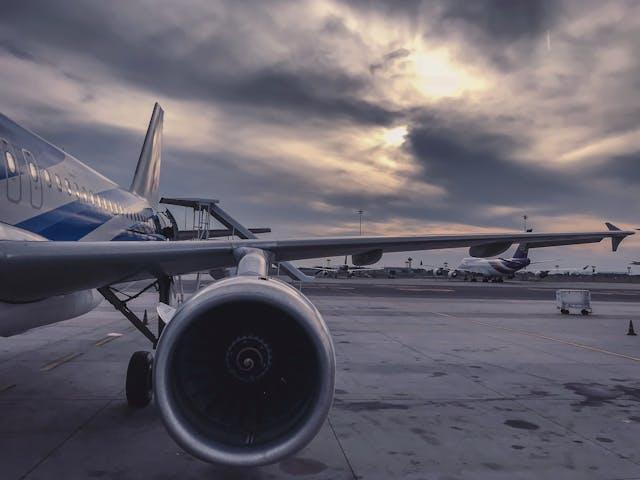Types of Aviation Maintenance Checks

Keeping an airplane safe and reliable is an ongoing cycle of inspections and services known as aviation maintenance checks. From quick gate-side walk‑arounds to full structural overhauls, these checks help airlines and operators catch small problems before they grow into big ones. Understanding types of aircraft maintenance checks, their timing, and scope is essential for anyone who flies, operates, or works on airplanes.
Line Maintenance Checks
Also called transit, pre‑flight, overnight, or service checks, these are the most frequent and straightforward aircraft inspection intervals. Typically performed every 24 to 60 flight hours or after each day’s flying, line checks happen right at the gate or on the ramp.
What’s involved?
Checking and topping off oil and hydraulic fluids
Inspecting wheels, tires, and brakes
Looking for visible damage or leaks on the fuselage and engine nacelles
Verifying that lights, pitot‑static ports, and emergency exits are clear
Because they are quick, often under an hour, line checks keep the airplane moving and make sure it meets the basic airworthiness before the next flight.
A Checks: The First Hangar Visit
About every 400–600 flight hours or 200–300 flights, aircraft enter the hangar for their A Check. These checks are part of regular aircraft scheduled maintenance, typically done overnight so the plane can return to service the next day.
What’s involved?
Detailed visual inspection of the airframe for dents, corrosion, or loose panels
Changing filters (oil, fuel, air) and lubricating hinges and control linkages
Testing emergency equipment: slides, life vests, exit lights
Running simple system tests like hydraulic pressure, electrical bus voltages
An A Check can take 6–24 hours. It’s more thorough than a line check and lays the groundwork for catching wear before it worsens.
B Checks: A Brief History
In older maintenance programs, B Checks fell between A and C Checks, usually every six to eight months. As aircraft became more reliable and maintenance planning more efficient, many operators folded B Check items into routine A or C Checks. Today, you will hear less about B Checks, but they historically covered intermediate inspections like deeper system functional tests and minor structural checks.
C Checks: Heavy Maintenance Checks
Roughly every 18–24 months, depending on the model, a C Check brings the aircraft into a specialized heavy‑maintenance facility for 1–2 weeks of work. Often called part of heavy maintenance checks, C Checks dig deeper into systems and structures.
What’s involved?
Opening access panels to inspect flight‑deck escape ropes, control‑cable runs, and floor beams
Operational checks on flap asymmetry, hydraulic systems, and auxiliary power units (APUs)
Detailed visual and non‑destructive inspections of wing‑box fittings, stabilizer attach points, and engine inlet ducts
Servicing landing‑gear wells, door seals, and major avionics bays
Because many panels come off and systems are tested under load, C Checks require careful planning, specialized tooling, and certified technicians. They ensure the airplane remains in top form between more extensive overhauls.
D Checks: The Ultimate Overhaul
The D Check, sometimes called a “heavy visit” or “structural check,” happens every 6–10 years. It’s the most exhaustive inspection, refurbishment, and replacement cycle in any aircraft maintenance checklist. Plan for a month or more out of service and a multimillion‑dollar tab.
What’s involved?
Stripping the cabin, from seats, panels, insulation, and overhead bins, comes out for inspection
Removing engines, landing gear, and flight controls for detailed examination
Using non‑destructive testing, ultrasound, eddy‑current, to find hidden corrosion or cracks in primary structures
Refinishing or replacing airframe skins, floor beams, and bulkheads as needed
Reinstalling every system with new hardware where required, plus complete functional checks
A D Check restores the airplane almost to “like‑new” condition. It’s a major decision in an aircraft’s life cycle, often paired with cabin refurbishments or system upgrades.
Understanding Aircraft Inspection Intervals
Every check, A, C, or D, follows manufacturer and regulator guidance. The FAA, EASA, or other authorities set maximum intervals, but operators sometimes schedule checks sooner based on usage patterns, environmental conditions, like salty coastal air, or discovered defects. A well‑managed aircraft scheduled maintenance program balances these intervals to optimize safety, availability, and cost.
Why Maintenance Checks in Aviation Are Important
Keeping Everyone Safe
Regular maintenance checks actively protect passengers and crew. By following each inspection interval, technicians verify that critical systems like landing gear, flight controls, and emergency equipment work exactly as designed. This prevents small faults from turning into challenges at 30,000 feet.
Catching Problems Early
Aircraft are complex machines where wear can hide just beneath the surface. Scheduled checks let mechanics spot corrosion, loose fasteners, or fluid leaks long before they cause breakdowns. Finding and fixing these issues early means simpler repairs, fewer surprise costs, and less risk of an in‑flight shutdown.
Managing Costs Predictably
Planning maintenance around A, C, and D checks smooths out expenses over an aircraft’s life. When each check has its own scope of work, airlines avoid the steep premiums charged for unplanned, emergency repairs.
Protecting Aircraft Value
A well‑documented history of on‑time maintenance inspections shows buyers that an aircraft has been cared for properly. Strong records of completed checks, backed by detailed findings and repairs, boost resale appeal and market price. Essentially, a plane with a clean maintenance pedigree commands more confidence from future operators.
Conclusion
From quick gate‑side walkarounds to months‑long overhauls, types of aircraft maintenance checks ensure every airplane meets strict safety and performance standards. Understanding the difference between A, B, C, and D checks on aircraft, and where heavy maintenance checks fit in, allows operators and maintenance teams to plan effectively. By following a clear schedule of aviation maintenance checks and respecting aircraft inspection intervals, airlines keep their fleets flying safely, reliably, and profitably for years to come.
